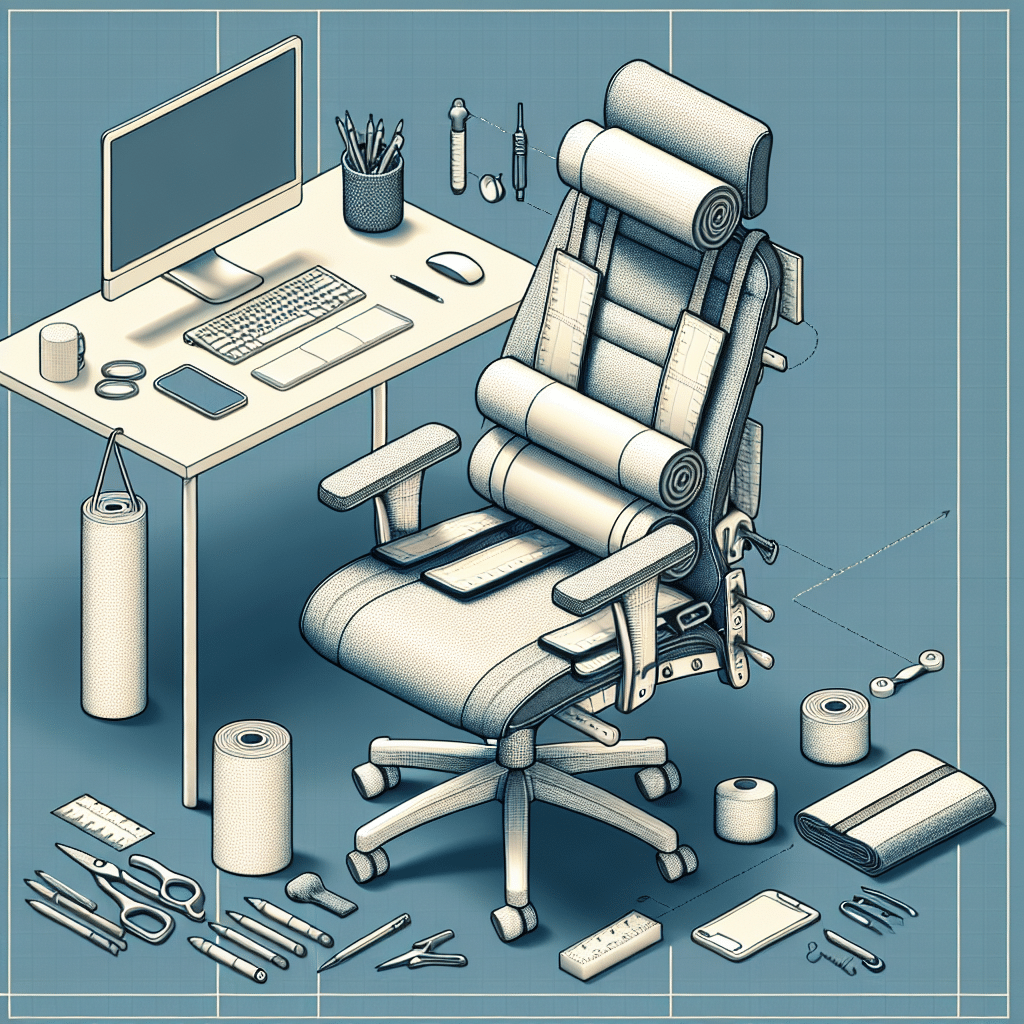Understanding Lumbar Support
Proper lumbar support is crucial for maintaining a healthy posture while sitting for extended periods. Lumbar support refers to the support provided to the lower back, particularly the lumbar region, which is curved inward. When sitting for long hours, it’s essential to ensure that the lumbar curve of the spine is adequately supported to prevent discomfort and long-term issues.
Importance of Lumbar Support
Without adequate lumbar support, your posture can suffer, leading to slumping, hunching, and overall spinal misalignment. This can result in chronic back pain, muscle fatigue, and other related issues. Ensuring that your desk chair provides proper lumbar support is vital for both office workers and remote employees alike.
DIY Lumbar Support Solutions
Here are several DIY lumbar support solutions you can implement quickly and easily:
1. Cushioned Pillow Method
Materials Needed:
- Soft pillow or cushion
- Fabric to cover (optional)
Instructions:
- Take a small, soft pillow or cushion, ideally contoured to fit the lower back arch.
- Place the pillow in the lower back area of your chair.
- Adjust the pillow’s height and angle until you find a comfortable position that supports the natural curve of your spine.
- If needed, cover the pillow with fabric to match your chair or for added comfort.
2. Towel Roll Technique
Materials Needed:
- Small towel
- Rubber band or string
Instructions:
- Roll the towel tightly into a cylindrical shape.
- Secure the roll using a rubber band or string.
- Place the rolled towel in the lumbar region of your chair, ensuring it fits snugly against your spine.
- Adjust the roll’s size or position for optimal support, using a second towel if necessary.
3. DIY Lumbar Roll
Materials Needed:
- Foam tubing or pool noodle
- Fabric
- Scissors
- Hot glue or sewing kit
Instructions:
- Cut a piece of foam tubing or a pool noodle to a size that feels comfortable – typically around 12-15 inches long.
- If desired, cover the foam with fabric, securing it with hot glue or sewing the ends together.
- Position the lumbar roll in your chair, ensuring it supports the lumbar region effectively. Adjust as needed.
4. Filling Up a Bag
Materials Needed:
- Small bag or tote
- Soft filler (bean bags, rice, or similar)
Instructions:
- Fill a small bag or tote with soft filler materials that provide moderate firmness.
- Place this bag in the lower back area of your chair.
- Adjust the quantity of filling based on your comfort needs, ensuring it doesn’t cause discomfort.
5. Using a Chair Cushion
Materials Needed:
- Available seat cushions
- Online or local store shopping
Instructions:
- If you’re unable to make a homemade solution, use an ergonomically designed chair cushion available in stores.
- Ensure the cushion supports the lumbar region effectively.
- Place it properly on your existing chair to enhance lumbar support.
6. Adjustable Backrest
Materials Needed:
- Sturdy cardboard
- Fabric or felt
- Tape or glue
Instructions:
- Cut a piece of sturdy cardboard to fit the shape of your lower back.
- Wrap it in fabric or felt for comfort.
- Use tape or glue to secure the fabric and attach straps to anchor it to the chair.
- Adjust the angle and height according to your preference for enhanced support.
7. Ergonomic Seat Wedge
Materials Needed:
- Hard plastic or thick cardboard
- Soft covering (optional)
Instructions:
- Cut a wedge from hard plastic or thick cardboard that gently lifts the pelvis while supporting the lumbar.
- If desired, cover with a soft fabric for comfort.
- Position the wedge in the seat area of your chair to create an ergonomic incline that promotes a healthy spine posture.
8. Memory Foam Solution
Materials Needed:
- Memory foam sheet or pillow
Instructions:
- Utilize a piece of memory foam from an old pillow or purchase a small sheet.
- Shape the foam into a contour that matches the curvature of your lower back by cutting as needed.
- Secure it with straps or tape to prevent movement during use.
- Adjust the memory foam placement until it fully supports your lumbar region.
9. Thick Book Approach
Materials Needed:
- Old thick book or binder
Instructions:
- Select a thick book or binder that is sturdy enough to provide support.
- Place the book vertically against the lumbar area of the chair.
- Adjust position as necessary for comfort and support.
10. Bolster Pillow Use
Materials Needed:
- Bolster pillow or similar round cushion
Instructions:
- Find a bolster pillow or create one using fabric and stuffing or rolled towels.
- Position the pillow in the lower back area of your chair.
- Adjust both the placement and firmness based on individual comfort needs.
Tips for Optimizing Your Workspace
- Desk Height: Ensure your desk is at an ergonomic height. Adjust your chair so your feet are flat on the floor, and your knees are at a 90-degree angle.
- Monitor Placement: Your monitor should be at eye level for optimal neck positioning.
- Breaks: Schedule regular breaks to stand, stretch, and reset your posture throughout the day.
Conclusion
Incorporating effective lumbar support solutions in your workspace not only helps you maintain comfort but can also prevent future back issues. Trial and error might be necessary to find the best solution for your unique body and chair configuration. Prioritizing your posture will lead to long-term health benefits, enabling you to work comfortably and efficiently.
